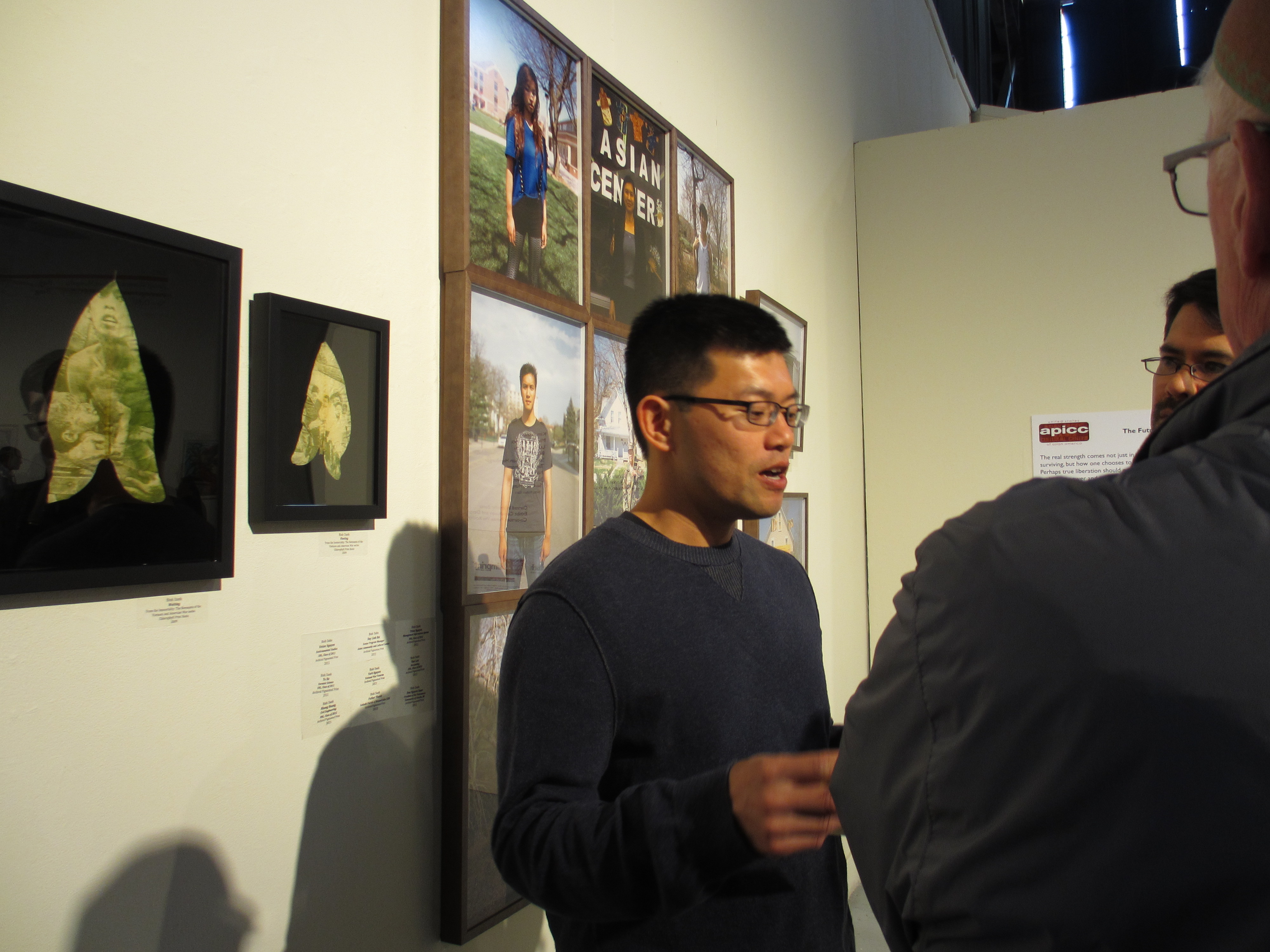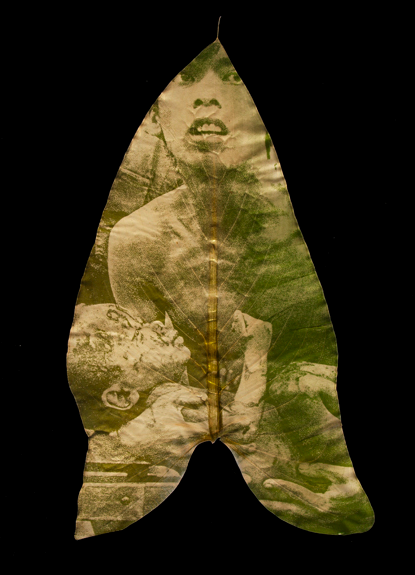diaCRITICS is reprinting this short interview of Binh Danh by SOMArts graphic design intern Corinna Karg, who caught up with the artist to talk about materials, techniques, and transmigration. Danh’s work was exhibited May 3-25 in San Francisco in The Future Is NOW: Asian America on its Own Terms, during which contemporary Asian American artists explored, engaged, reflected and critiqued their relationship to the past, present and future. As Danh said in 2006, “It’s almost my religious practice when I make my own artwork because I’m coming up with my own concept about what is life, what is death, what is consciousness, what is history.” diaCRITICS profiled a previous exhibit by Danh at Mills College in 2010.
[before we begin: have you heard about our subscriber drive? win an iPod and other prizes!]

What stories do the printed leaves in your pieces in The Future Is NOW: Asian America on Its Own Terms tell the viewer?
When I was looking at pictures of the war, photos of civilians being wounded or killed saddened me. I imagined as they are bleeding and possibly dying, their essences sank into the ground and the memories of the event join with the landscape. For me, a photograph is always a picture of the past, but that past lives in the present moment when the image is resurrected in ourselves by the pure act of us looking at the artwork.
We could use photography to meditate on themes of death, resurrection, history, landscape, time, and our collective memories. For me looking at the pictures of war and especially those on leaves, I understand that death is within reach and life is fragile. It is acknowledging that we will die at any moment makes our lives more meaningful. And when it does happen, we know that we ultimately become part of nature. I hope the viewers are able to form narratives about the Vietnam War. Why people were leaving the country during and after the war? And as a result, Vietnamese communities formed through out the world.

How did you arrive at the technique of printing on leaves trough photosynthesis, and what made you later transition to daguerreotype?
One summer, I was motivated to experiment with photosynthesis and its pigments after watching the lawn change color due to a water hose that was placed on it. Soon after that observation, I was making chlorophyll prints. For the past 5 years, I have been making daguerreotype, a 19-century photographic process. I have taken a historical process and applying it to a contemporary theme. A study of photo-history is a study of humanity. Time and space are recorded for future evaluation and studies. Photography became a process that changes the way we record history, no longer just use words but images too. I love the quality of the daguerreotype, the reflective surfaces. The viewer becomes part of the artwork as the view the photograph.
Are the tropical plants you use in your chlorophyll prints Vietnamese or American plants?
They are plants grown in my garden.
Why did you choose something organic, like the leaves, as a canvas for images of something man-made, like war?
This process deals with the idea of elemental transmigration: the decomposition and composition of matter into other forms. The images of war are part of the leaves, and live inside and outside of them. The leaves express the continuum of war. They contain the residue of the Vietnam War: bombs, blood, sweat, tears, and metals. The dead have been incorporated into the landscape of Vietnam during the cycles of birth, life, and death; through the recycling and transformation of materials, and the creation of new materials. Since matter is neither created nor destroyed, but only transformed, the remnants of the Vietnam and American War live on forever in the Vietnamese landscape. This body of work addresses this continuum.
~
Binh Danh is a Viet Nam-born artist who immigrated with his parents to the United States in 1979. Danh received his MFA from Stanford University in 2004 and has emerged as an artist of national importance with work that investigates his Vietnamese heritage and our collective memory of war, both in Viet Nam and Cambodia—work that, in his own words, deals with “mortality, memory, history, landscape, justice, evidence, and spirituality.” His technique incorporates his invention of the chlorophyll printing process, in which photographic images appear embedded in leaves through the action of photosynthesis. His newer body of work focuses on the Daguerreotype process. Binh Danh has been included in important exhibitions at museums across the country, as well as the collections of the Corcoran Art Gallery, The Philadelphia Museum of Art, the deYoung Museum, and the George Eastman House, among many others. He received the 2010 Eureka Fellowship from the Fleishhacker Foundation and is represented by Haines Gallery in San Francisco, CA, and Lisa Sette Gallery in Scottsdale, AZ.
Do you enjoy reading diaCRITICS? Then please consider subscribing!
Please take the time to rate this post (above) and share it (below). Ratings for top posts are listed on the sidebar. Sharing (on email, Facebook, etc.) helps spread the word about diaCRITICS. And join the conversation and leave a comment! Have you seen Danh’s work? What do you think of his innovative technique and his engagement with memory and history?


